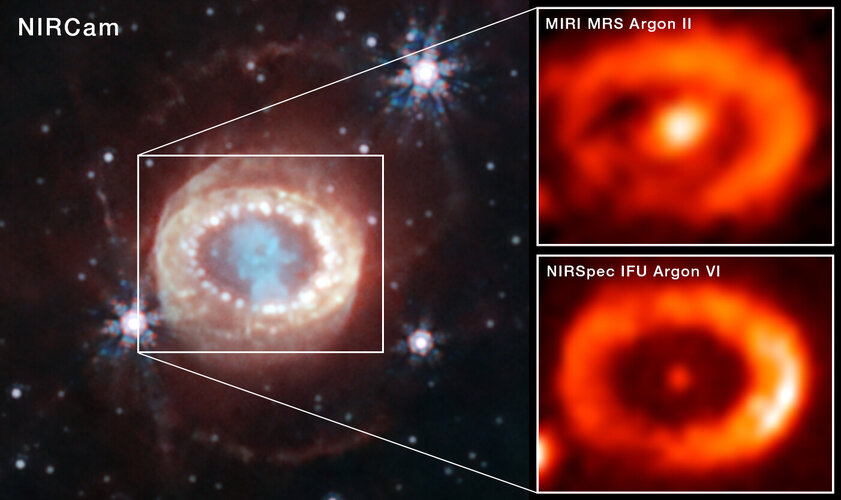Webb began science observations in July 2022, and the observations behind this work were taken on 16 July, making the SN 1987A remnant one the first objects observed by Webb. The team used the Medium Resolution Spectrograph (MRS) mode of Webb’s MIRI instrument, which the members of the same team helped to develop. The MRS is a type of instrument known as an Integral Field Unit (IFU). IFUs are able to image an object and take a spectrum of it at the same time. The instrument captures a spectrum at each pixel, allowing observers to see spectroscopic differences across the object. Spectral analysis of the results showed a strong signal due to ionised argon from the centre of the ejected material that surrounds the original site of SN 1987A.
Subsequent observations using Webb’s NIRSpec (Near Infrared Spectrograph) IFU mode, at shorter wavelengths, more heavily ionised [4] chemical species, including five times ionised argon (meaning argon atoms that have lost five of their 18 electrons). Such ions require highly energetic photons to form, and those photons have to come from somewhere. “To create these ions that we observed in the ejecta, it was clear that there had to be a source of high-energy radiation in the centre of the SN 1987A remnant," Fransson said. "In the paper we discuss different possibilities, finding that only a few scenarios are likely, and all of these involve a newly born neutron star.”
More observations of SN 1987A are planned this year, with Webb and ground-based telescopes. The research team hopes ongoing study will provide more clarity about exactly what is happening in the heart of this supernova remnant. These observations will hopefully spur the development of more detailed models [5], ultimately enabling astronomers to better understand not just SN 1987A, but all core-collapse supernovae.



